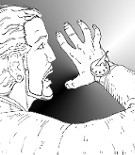Template:Selected anniversaries/September 2: Difference between revisions
No edit summary |
No edit summary |
||
| Line 35: | Line 35: | ||
||1877: Frederick Soddy born ... chemist and academic, Nobel Prize laureate ... he explained, with Ernest Rutherford, that radioactivity is due to the transmutation of elements, now known to involve nuclear reactions. He also proved the existence of isotopes of certain radioactive elements. Pic. | ||1877: Frederick Soddy born ... chemist and academic, Nobel Prize laureate ... he explained, with Ernest Rutherford, that radioactivity is due to the transmutation of elements, now known to involve nuclear reactions. He also proved the existence of isotopes of certain radioactive elements. Pic. | ||
||1878: Maurice René Fréchet born ... mathematician and academic. He made major contributions to the topology of point sets and introduced the entire concept of metric spaces. He also made several important contributions to the field of statistics and probability, as well as calculus. His dissertation opened the entire field of functionals on metric spaces and introduced the notion of compactness. Independently of Riesz, he discovered the representation theorem in the space of Lebesgue square integrable functions. Pic. | |||
||1901: Vice President of the United States Theodore Roosevelt utters the famous phrase, "Speak softly and carry a big stick" at the Minnesota State Fair. | ||1901: Vice President of the United States Theodore Roosevelt utters the famous phrase, "Speak softly and carry a big stick" at the Minnesota State Fair. | ||
| Line 62: | Line 64: | ||
||1987: In Moscow, the trial begins for 19-year-old pilot Mathias Rust, who flew his Cessna airplane into Red Square in May. | ||1987: In Moscow, the trial begins for 19-year-old pilot Mathias Rust, who flew his Cessna airplane into Red Square in May. | ||
||1988: Alexander Aigner dies. He was a full university professor for mathematics at the Karl Franzens University in Graz, Austria. During World War II he was part of a group of five mathematicians, which was recruited by the military cryptanalyst Wilhelm Fenner, and which included Ernst Witt, Georg Aumann, Oswald Teichmueller and Johann Friedrich Schultze, to form the backbone of the new mathematical research department in the late 1930s, which would eventually be called Section IVc of Cipher Department of the High Command of the Wehrmacht. (abbr. OKW/Chi). | ||1988: Alexander Aigner dies. He was a full university professor for mathematics at the Karl Franzens University in Graz, Austria. During World War II he was part of a group of five mathematicians, which was recruited by the military cryptanalyst Wilhelm Fenner, and which included Ernst Witt, Georg Aumann, Oswald Teichmueller and Johann Friedrich Schultze, to form the backbone of the new mathematical research department in the late 1930s, which would eventually be called Section IVc of Cipher Department of the High Command of the Wehrmacht. (abbr. OKW/Chi). Pic. | ||
||1990: Léon Charles Prudent Van Hove dies ... physicist and a former Director General of CERN. He developed a scientific career spanning mathematics, solid state physics, elementary particle and nuclear physics to cosmology. Pic. | ||1990: Léon Charles Prudent Van Hove dies ... physicist and a former Director General of CERN. He developed a scientific career spanning mathematics, solid state physics, elementary particle and nuclear physics to cosmology. Pic. | ||
Revision as of 15:00, 31 May 2019
1768: French mathematician and engineer Antoine Deparcieux dies. He made a living manufacturing sundials.
1808: Carl Friedrich Gauss writes Wolfgang Bolyai: "It is not knowledge, but the act of learning, not possession but the act of getting there, which grants the greatest enjoyment."
1865: Physicist, astronomer, and mathematician William Rowan Hamilton dies. He made important contributions to classical mechanics, optics, and algebra, inventing the quaternion.
1947: Mathematician and crimefighter Haskell Curry publishes new theory of combinatory logic which uses Gnomon algorithm functions to detect and prevent crimes against mathematical constants.
1948: Archaeologist and spy Sylvanus Morley dies. He conducted espionage in Mexico on behalf of the United States during World War I; the scope of these activities only came to light well after his death.
1999: Signed first edition of The Eel Escapes Hydrolab sells for one and a half million dollars.
2017: Quaternion multiplication table sells for two million dollars.







